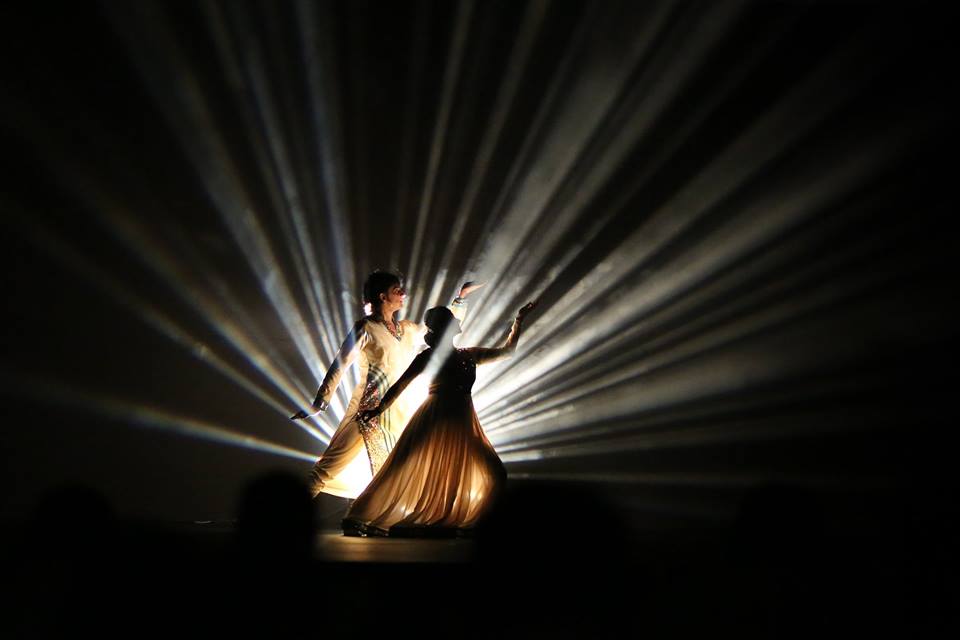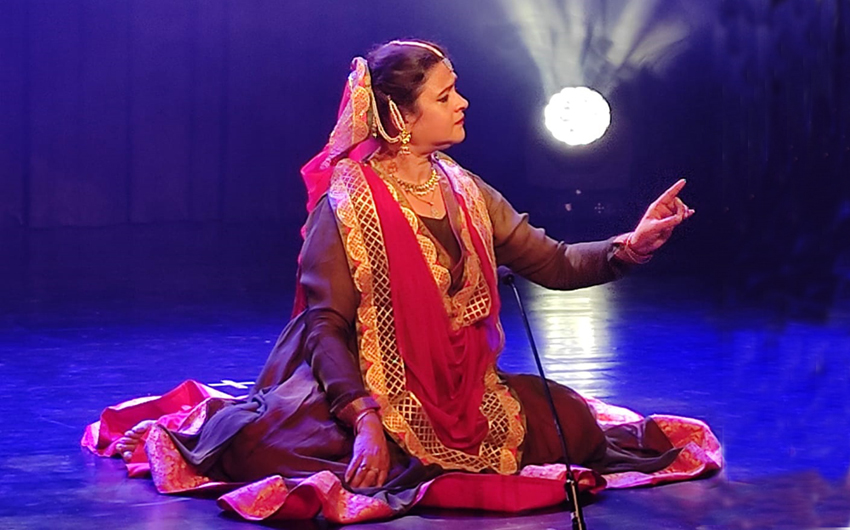I am a serious student of Tabla and I have been that way for a little more than two decades. Gifted only with a scholarly outlook, I have only always performed to experience my own inner joy of playing. When the time to choose a career arrived, Tabla was simply never in the running because I felt I would never be able to continue to experience the joy if I depended on it for income. When I started mentoring too, it was to really only to learn more through the process of teaching.
I carried the same mentality forward when I wrote articles on the subject of Indian classical music. I wanted to write for other people like me: serious students of music who have the capacity to listen to expressed views on the subject and can contemplate on questions pertinent to the topic. Neither would such students care about my associations (who I know or don’t in the industry) nor would they look for colorful illustrations accompanying my writing before commencing reading. They would read it purely for the content and connect solely with the subject of Tabla and Indian classical music.
Surprisingly, soon enough, I realized that such an audience is really hard to find! The harder part is that the revenue for the magazines is tied to their readers and therefore the content they can carry has to pander to the quality of readership no matter how good or bad it is. As I tested the waters with biographical write-ups on popular artists, it was a revelation that successful content had to be eye catchy and in keeping with the readers’ temperament – in short, bursts for them to absorb. In contrast, my style was all about sustaining longer chains of thought irrespective of presentation. The core question then was: given my outlook and choices, did it make sense to compromise in my writing for my readers?
The answer to this question depends on who I define my readers to be and the level of satisfaction I wish to derive from writing for them. Would I write for an audience disconnected from Indian classical music and try to attract them to it? That would probably cover almost all of the readership and yet I might find this the least satisfying personally. Would I be writing for people who enjoy the connection with classical music but cannot really analyze much? That would encompass a slightly broader readership base and yet leave me with a sense of satisfaction. Or would I be writing for those who are already deeply immersed in the field, perhaps even in a performing capacity? If so, then I would be addressing a really tiny percentage of the readership, yet enjoying perhaps the most satisfaction for my work. As I deliberated hard on this, I realized that these are not three different classes of people but merely the stages of development which every single person goes through. So it seemed that in essence, I wanted to write for the entire readership and yet I didn’t want to spend time on those who couldn’t show the patience for it.
I was really lucky to find support in Nina Buddhdev who believed in my motivations and connected me with ClassicalClaps who graciously agreed to carry my writings. Meanwhile, this entire process left me hungry to research why generally magazines credited their readers with ten-second attention spans.
Understanding my Audience

It turned out it wasn’t just this industry. The trend of proving the worth of things within atypically short time frames has become potent in the last two or three decades like never before. We judge multi-hour long movies through the 2-3min long trailers accompanying it. We judge contestants on shows such as Britain’s Got Talent within few minutes. Even the world’s most popular sport, Cricket, known as a gentleman’s game and played by the book over five long days for centuries now has introduced a new short format which concludes a match within three hours. If every industry is already modifying its content to suit the audience, however crass that is, what hope remains for such arts as Indian classical music which puts forth build-up as a defining attribute? A change may be affected either with the Content managers or the audience, but content managers have no problem with feeding content if the audience will lap it up. So it must be the audience we must analyze then and study what motivates them to seek quick answers and easy redemption.
The world is all about automation now – making processes faster, smarter and more efficient. With previously month-long tasks taking days and day-long tasks taking minutes, a lot of time indeed frees up. I know people who will order food from a restaurant so they can save cooking time. I have friends who do automation for a living, who truly believe Maggi instant noodles takes more than two minutes under their non-ideal cooking conditions in the kitchen and yet will cook it for barely that much in order to – you guessed it right – SAVE TIME. So I asked a bunch of people: what do you do with that free time? Everything they said, be it ‘watching Netflix shows’, ‘watching television’ or even just family time, came down to using the time to achieve the goal of living the ‘good life’, defined differently in their own contexts. Now my research was getting somewhere interesting – a study in Eudaimonia.
What is Eudaimonia?
By definition, Eudaimonia implies a state of happiness and welfare. A person experiencing Eudaimonia is living well and it is really his or her personalized definition of the word “well” that dictates their life choices towards achieving that good life. Your definition of what “well” means might not be the same as mine. For some, spending time with their family is their idea of Eudaimonia. For some, it is playing golf with friends on summer evenings. For some others, it is about driving across the town in a BMW. Taking a selfie at an Ed Sheeran concert is Eudaimonia for many even though they may not appreciate most aspects of the music at all. It’s a far lesser number of people whose idea of Eudaimonia is to attend the Sawai Gandharva music festival this year or the next in Pune. No matter what our definition of Eudaimonia is, all our ‘I-must-save-time’ mentality is only geared towards achieving it. Furthermore, social media just happens to be the tool, available in the right place at the right time, which amplifies the projection of our good life to folks around so we can feel validated by their attention.
[adrotate group=”9″]
When I analyze it from this perspective, I actually begin to understand the thought process behind some organizations that seek to portray western songs in the Indian classical context as a means to bring in the lay crowd for the latter. The lay crowd is those who ask “If I have free time, why should I go with classical music of all things?” These organizations are planting the seeds of Indian classical music in the minds of the lay people as an important part of what their Eudaimonia looks like. I really do think that it is pretty cool. So I do get why they use western pop songs rendered in an Indian classical music context to lure the audience. When I see little children performing the pieces, I love the visual! Sadly, that’s where it ends for me because of a fundamental disconnect: the timeless nature of the Indian classical music tradition and the time-bound nature of pop songs are deeply incompatible with one another. Does singing a western song in the equivalent syllables of its notes SA, RE, GA, MA etc. make it belong to Indian classical music? No. If anything, this only makes it a mere caricature. Does this misrepresent the notion of Indian classical music when presented to a broad audience? The answer to that is not a resounding No. The fact is that those who were initially attracted to a fusion item will find it really hard to move on to a deeper understanding of either of the fused styles because what attracted them to it was a combined package in the first place. Instead of impressing a change in the audience mindset towards the subject, a compromised piece, a mirage of an original traditional composition, is used as bait. Once again, because the content is compromised, this effort can only go so far in succeeding. Why then are parents rushing to subscribe their kids to these endeavours with such deeply flawed foundations? Well, I think the parents are realizing their own Eudaimonia as they want to believe they are doing the best they can for their children. After all, there is no greater visual one can sell to a parent than that of their child performing the music of their supposed heritage! It is a proud moment for a parent when someone comes up to say, “I watched your kid on the viral video! What an amazing kid you have raised”.
Remember the second category of people who enjoy classical music but do not wish to put the effort to analyze it. Their Eudaimonia is captured in a picture of them being in a concert hall with a classical musician performing at the instant that the ‘signature’ artifact was rendered. The signature artifact is simply the one thing that these folks boil down the summary of a two or three-hour concert down to. Maybe it is where Begum Parveen Sultana touches the fourth octave. Maybe Anup Jalota sings a syllable uninterrupted for a long period of time. Such artifacts are simply checkboxes that get marked as done and the Eudaimonia is achieved. This is where they tell themselves, “I am living the good life”. The fact that the performance wasn’t truly analyzed is masked easily in typical social conversations with “Wah Kya Baat Hai!”
[adrotate group=”9″]
Finally, there is the category of people who actually look at the artwork for every little detail that was put into it. These people understand why every little stroke of the paintbrush was added. Better, they will try to understand why something was NOT done. They understand why a particular idea was inserted in the raga during elaboration. Art is an important part of their Eudaimonia as they visualize themselves appreciating or performing art in it. While these folks are an absolute pleasure to hang out with and even write for, they are a minority sadly and therefore cannot impact revenue streams anywhere significantly to make a difference.
Indian classical music demands time to grow on us. It is like a plant. Like life. We are not built to absorb a raga in a matter of minutes. It takes hours – maybe two, maybe three at least. But once it permeates our minds, we will not be able to snap out of it for a long period of time! Quite like the herbs and spices that permeate the food when we allow it to cook for long hold us in their spell long after the tasty meal is over! To reject Indian classical music because it is too slow or boring is to basically reject ourselves for our slow biology and intellect! It is also not a product in the market that we can sample and return. Even if we want to think of it that way, only those qualified by training or experience over decades can “review” the product. Why? Because that is just how long it takes for this music to take root in our minds. Its enduring legacy over millennia is proof that it does not need us and that it is our loss if we cannot preserve it. It comes with health benefits that are documented over many research papers but the point is this: wouldn’t it be the best use of all that saved time if we were to reinvest it in our own self-development in this manner? Here is a cause worthy of dedicating an entire lifetime to and it rewards us back in a good measure too once we are within its fold!
[adrotate group=”9″]
About the Author:
 Sandeep Hattangady has pursued Tabla for more than two decades, learning from eminent Tabla Gurus including Shri Prabhakar Betrabet, Ustad Shabbir Nisar and Pt Mohan Balvalli. He has performed widely in India and the United States, playing both solo and accompanying artists such as Pt K Sridhar, Shri Anirban Dasgupta, and Dr. M Narmadha among others.
Sandeep Hattangady has pursued Tabla for more than two decades, learning from eminent Tabla Gurus including Shri Prabhakar Betrabet, Ustad Shabbir Nisar and Pt Mohan Balvalli. He has performed widely in India and the United States, playing both solo and accompanying artists such as Pt K Sridhar, Shri Anirban Dasgupta, and Dr. M Narmadha among others.
Based in Morrisville, Sandeep balances his musical interest in performing and teaching Tabla alongside his professional pursuits working as an electrical engineer in the semiconductor industry. He has co-authored the book, TIHAAI, with his Guru Shri Prabhakar Betrabet for students of Tabla and music.











